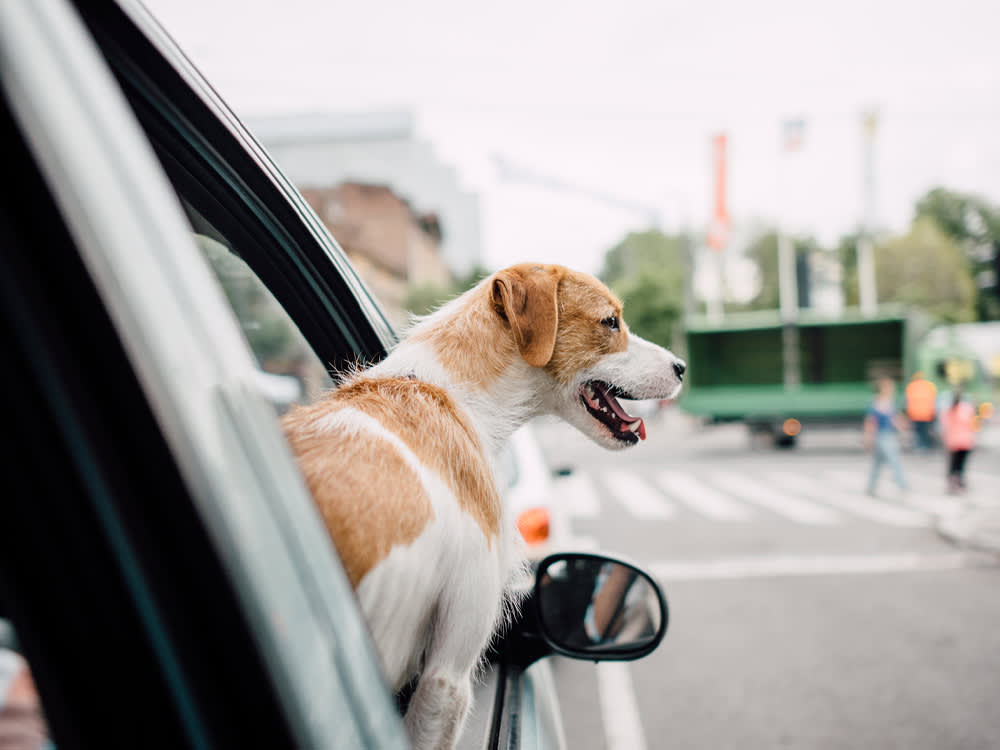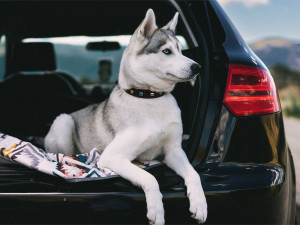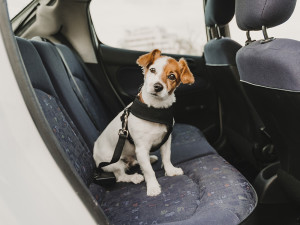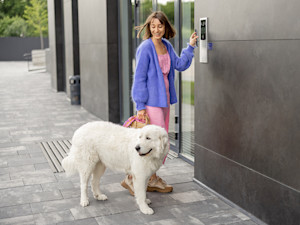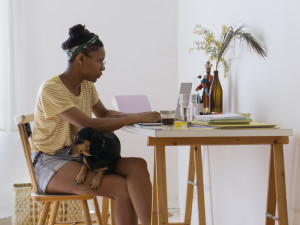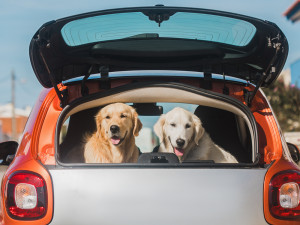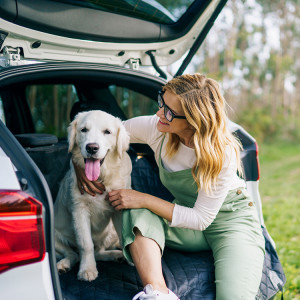Moving States with Your Pet? How to Make It Happen
Here are some must-dos for your moving checklist.
The list of my transgressions against my dog, Cleo, is, according to Cleo, extremely long. There was that one hike she really hated. The loathsome baths. That guy whose whole vibe she did not care for, and whom I kept seeing anyway. But certainly my worst offenses — and these, I have to agree, were pretty bad — were the two cross-country moves to which I subjected us in the past three years.
Moving is regularly listed as one of the top-five most stressful life events. And that’s for humans who chose to move and who have the capacity to understand what’s happening when strangers show up at your door and load all your earthly belongings into a truck. For pets, the experience can be scary and disorienting.
Luckily, there are some things you can do to make the whole state-to-state moving process less stressful for both you and your pet. I talked to celebrity dog trainer and pet lifestyle expert and Kinship Expert Collective member Nicole Ellis about how to ensure a big move goes smoothly.
Before You Leave
Start slowly.
As soon as boxes start coming out, your dog is going to sense that something’s up. Instead of packing everything up all at once and turning your pet’s whole world upside down in one go, Ellis recommends bringing out boxes earlier and letting your pet get used to them. “Act normal around them,” she says. “We can play games around them, we could play fetch around them. Make it a fun part of our house, or like a piece of furniture.” Then, once your pet is OK with the boxes, you can start to fill them and the process will seem natural, rather than stressful.
How much do you spend on your pet per year?
Stick to a routine as much as possible.
With all the chaos that often accompanies moving, it’s easy for routines to go out the window. But Ellis recommends sticking to our pets’ regular schedules as much as possible. “Dogs love consistency,” she explains. “So if all of a sudden the house is a mess, we’re no longer feeding them their breakfast at 8:00 a.m., and we don’t have time for our morning walk, it really doesn’t help their state of mind.”
Make sure their tags are up to date.
If your pet’s tag has your old information on it, make sure to get them new tags with your updated information. And most importantly, make sure you have the right telephone number on there, Ellis says. Moves can stress animals out, and with people coming in and out of the house, they may be more likely to bolt, so it’s essential that people are able to get in touch with you if they find your escaped pet.
Look into registering your dog in your new state.
Different states have different registration requirements, so do your homework before you leave. Most states require proof of a rabies vaccination and proof that your dog is spayed or neutered. (Registration costs may be higher for unneutered pets.) And if you have a so-called “bully breed,” such as a Pit Bull, make sure they’re allowed in your new municipality, because cities across the country have banned them. Thankfully advocates for these breeds, like Pinups for Pitbulls, are doing the work to get these unfair bans lifted.
Find a new vet
Do your research about which vets are in the area by your new home. Once you’ve chosen one, you can have your current vet send over all of your pet’s information and paperwork so that the new vet has all the information they need on hand when you arrive for your first appointment.
During the Move
Keep them leashed.
As we mentioned earlier, because of all the stress of moving, animals may be more likely to get scared and bolt out of an open door or gate. For that reason, it’s best to keep them leashed while movers are around. Or, Ellis suggests, if your dog has a favorite friend they like to play with, you might want to take them over to that friend’s house for one last playdate, so they don’t have to be around during the most tumultuous part of a pack-out.
Create a safe space for them.
With all the upheaval around them, any consistency you can offer your dog — in the form of a favorite blanket or toy — can be a big help. “If you’re moving either by car or by plane, try to bring some of your dog’s favorite belongings if you can,” Ellis says. This not only provides them comfort during the move but can help you set up a safe space for them in your new house.
Bring their usual food with you
A change of diet can wreak havoc on your pup’s stomach. So even if there are plenty of pet stores around your new place, Ellis recommends bringing some of their regular food with you to ensure consistency. “You never know about shipping delays,” she warns. “Or if a pet store runs out of your dog’s food.”
Once You’re There
Do a walkthrough of your new place to make sure it’s safe.
Before you let your pet loose in your new home, Ellis recommends doing a final walkthrough to make sure it’s safe for them. Keep an eye out for open doors or windows or any glass that may have gotten broken during the move.
Let your dog explore their home at their own pace.
While some dogs may run around their new home, sniffing every corner, others may be more cautious and slow to explore. Whatever the case may be, let them survey the space in their own way and in their own time. “I’m not gonna force a dog around,” Ellis says. “If we have a nervous dog, we can toss treats into rooms. This encourages them to move and allows them to explore without feeling overwhelmed.”
Take them for a walk.
For Ellis, going on a walk around your new neighborhood is one of the most important steps in making a big move with your dog. “It’s going to allow your dog to sniff the neighborhood and get to know their new home a little bit,” she says. And, who knows, maybe they could make a new friend along the way.
